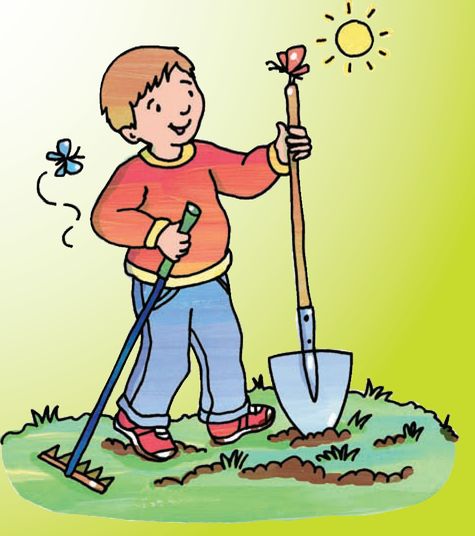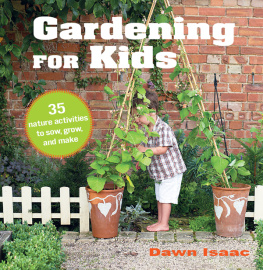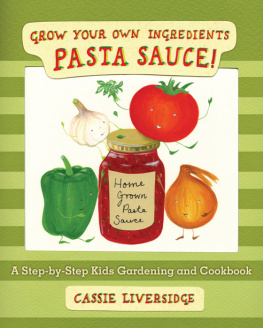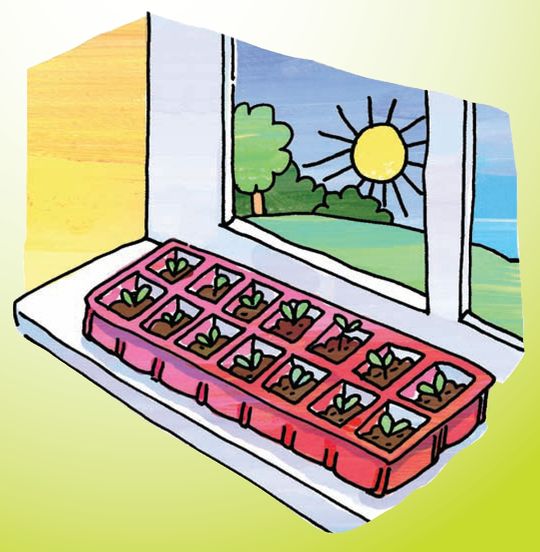Acknowledgments
The following individuals contributed ideas and activities to this book:
Anne Adeney, Linda Atamian, Laura Claire-Gremett, Sharon Dempsey, Laura Durbrow, Sue Bradford Edwards, Kay Flowers, Karen Gassett, Virginia Jean Herrod, Erin Huffstetler, Mary Ann Kohl, Barb Lindsay, Eileen Lucas, Jayne Morrison, Sandra Nagel, Shirley Anne Ramaley, Dani Rosensteel, Kim St. George, Barbara Saul, Debbie Vilardi, Jackie Wright
Chapter 1
Watch It Grow
Lets Make a Garden!
Here is a simple, child-friendly garden. You can add to it and make it your own as you and your child discover what you enjoy doing together. Refer back to this page whenever you need a refresher.
What Youll Need
rake (use a child-sized rake if you have one)
seeds or seedlings (herb, flower, or vegetable)
shovel
sunny, outdoor garden area
topsoil or compost (see page 4 8)
trowel
watering can
What to Do
1 Choose a sunny spot. Start small, maybe 3 by 3-you can always enlarge the garden later.
2 Your child can help you prepare the soil. With the shovel, dig up the planting area to loosen the soil. You should do the heavy digging and encourage him to break up the clumps of dirt with his hands and the trowel.
3 Add a good layer of topsoil or compost (you can buy a bag at the garden center). You dig it in, then your child can help you rake the area smooth.
4 Demonstrate how to plant a seed by digging a small hole with the trowel, putting a couple of seeds in it, and covering them with soil. If you are using seedlings, show how to dig a small hole, insert the seedling, and press soil gently around it.
5 Water everything well.
6 Check the garden every day and water when needed. (See Taking Care of your Garden on pages 4 658, for ideas about weeding and pest control.)
7 As the plants grow, enjoy the changes with your child.
8 As they become ready, pick flowers and herbs for the house and vegetables for the kitchen.
9 You may want to keep a simple journal with your child, recording in words and pictures how the garden grows.

Growing Three Sisters
This is a gardening activity and a way to learn about the cultures that Europeans found when they arrived in the Americas. For thousands of years, people all over the world have been gardening, and we can learn from them all.
What Youll Need
a sunny area at least 4 by 4
compost (see page 4 8)
corn, pole beans, and squash seeds (you can use zucchini or winter squash, or both)
shovel
soil
trowel
Books to Share
Corn Is Maize by Aliki
One Bean by Anne Rockwell
What to Do
1 Talk with your child about Native American cultures and pay a visit to the library. The Iroquois nations and many other tribes called corn, beans, and squash The Three Sisters. Native Americans planted these vegetables together, and the three plants helped each other just as human brothers and sisters do. Corn grows tall and gives the beans something to climb on. Beans add nitrogen to the soil to fertilize the corn and the squash. Bristly squash stems keep animals from eating the other plants.
2 If you are going to plant in an area that has not been planted before, use the shovel to remove the grass or sod, and loosen the soil to prepare a garden bed.
3 Mark four rows of four holes each. You and your child can work together to dig each hole 4 to 6 deep. Space the holes about 1 apart.
4 Mix compost (see page 4 8) with the soil you have removed from the holes. This is a great job for your child, using hands or a trowel.
5 Help your child overfill the holes with the compost and soil mixture. Dont stop until you have a small mound (4 high and 12 wide) on top of each hole.
6 Plant four corn seeds in each mound, making a small circle around the center of the mound. Water these seeds well.
7 Check them every day and keep them watered. When the corn is 4 to 6 tall, plant four bean seeds, one on each side of the mound and about half way down the mound, and plant four squash seeds around the base of each mound.
8 As the beans grow, wind them around the corn stalks.
Start Squash Indoors
Squash is a great plant for children. It grows quickly and produces impressive vines and an abundant harvest. Start it indoors to make it even more interesting.
What Youll Need
large tray or newspaper to protect the work surface
old spoon
paper cups (poke a hole in the bottom of each, for drainage)
potting soil
squash seeds
water and sunlight
What to Do
1 Place materials on a large tray or on a table covered with newspaper.
2 Have your child scoop soil into each cup.
3 Put a seed on top of the soil and cover lightly with more soil.
4 Water well.
5 Place the plants in sunlight.
6 Wait and watch, checking every day and watering as needed.
7 When the seedlings are strong and sturdy, plant them outdoors in your garden and watch them grow!
Use What You Have
You already have simple containers for starting seeds! You or your child may come up with more ideas of your own.
What Youll Need
an old plastic ice cube tray or a clean egg carton
seeds of your choice
sunny windowsill
water
What to Do
Your child can do all of these steps, with supervision.
1 Poke a small hole in the bottom of each cup of your ice cube tray or egg carton so that the water can drain.
2 Fill each cup with potting soil.
3 Plant two or three seeds in each cup.
4 Water, and place on a sunny windowsill.
5 Check daily, and keep the soil moist.
6 Once the seeds have sprouted, pinch off the smallest plants so that you have one strong plant per cup.
7 When the seedlings are sturdy, plant them outside in your garden.
Make a Mini-Greenhouse
You and your child can start plants indoors in the early spring, and they will be ready to plant outdoors when the soil warms up. Or, if you plant lettuce, spinach, or beet seeds in a mini greenhouse, you can use the tiny leaves and greens any time as a delicious addition to your salad.
What Youll Need
a small watering can
clear plastic berry boxes with hinged lids
potting soil (you can buy a bag at the hardware store or garden center)
seeds of your choice
What to Do
Your child can do all of these steps, with supervision.
1 Rinse out the berry boxes.
2 Fill them about half full of potting soil and plant the seeds inside. Try fast-growing plants such as beans, lettuce, radishes, and thyme to keep your child captivated throughout the growing process.
3 Water lightly, then close the lid.








